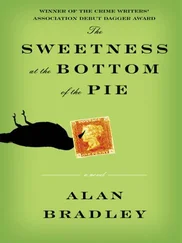190 Yuenyong included the song:Charles Piller, “Squawking at Bird Flu Warning,” Los Angeles Times, Sept. 1, 2005.
196 clear their throats:For the various details of this case, see Vijay Joshi, “Thai Man Dies of Bird Flu, Asian Toll Rises to 28,” Associated Press, Sept. 9, 2004; “Bird Flu Kills 18-Year-Old Man in Thailand,” Kyodo News Service, Sept. 9, 2004; and “Thai Man Dies of Bird Flu: Health Ministry,” Agence France Presse, Sept. 9, 2004.
197 had died in previous weeks:“Breeder Dies from Bird Flu,” Nation (Thailand), Sept. 10, 2004.
197 “The victim failed to report”:Anusak Konglang, “Thailand Reports First Bird Flu Death in Over Seven Months,” Agence France Presse, July 26, 2006.
197 villagers had declined to notify officials:“Thailand Tries to Improve Bird Flu Monitoring,” Reuters, June 27, 2006.
198 The state’s chief minister:“Repent, Nik Aziz Tells Cockfighting Buffs,” Bernama, Sept. 23, 2004.
198 Thailand shipped nearly six thousand:Kasikorn Research Center, Feb. 10, 2004, cited in “Raising Domestic Chicken Breeds: Interesting,” Thai Press Reports, Feb. 11, 2004.
198 illegal cockfighting tours:“Cock-fighting Birds Likely Culprit in Mukdahan H5N1 Outbreak,” Nation (Thailand), Mar. 21, 2007.
200 30 million households:“Govt Defends Its Bird Flu Measures,” Jakarta Post, Aug. 10, 2006.
200 “greatest single challenge”:Comments from the U.S. Agency for International Development in appendix 2 of Influenza Pandemic: Efforts to Forestall Onset Are Underway; Identifying Countries at Greatest Risk Entails Challenges , Government Accountability Office, June 2007, GAO-07-604.
201 force poultry farming underground:Juan Lubroth at an FAO press conference in Bangkok, quoted in FAO news release, “New Bird Flu Outbreaks Require Strong Vigilance,” Jan. 23, 2007.
202 continue to take risks:Sowath Ly et al., “Interaction Between Humans and Poultry, Rural Cambodia,” Emerging Infectious Diseases 13, no. 1 (Jan. 2007): 130-32; and H. M. Barennes et al., “Avian Influenza Risk Perceptions, Laos,” Emerging Infectious Diseases 13, no. 7 (July 2007): 1126-28.
203 thirteen thousand live poultry markets:Joseph Domenech et al., “Trends and Dynamics of HPAI—Epidemiological and Animal Health Risks,” Background Paper at the Technical Meeting on Highly Pathogenic Avian Influenza and Human H5N1 Infection, Rome, June 27-29, 2007.
203 a perilous nexus:Robert G. Webster, “Wet Markets—a Continuing Source of Severe Acute Respiratory Syndrome and Influenza?” Lancet 363, no. 9404 (Jan. 17, 2004): 234-36. See also Writing Committee of the Second World Health Organization Consultation on Clinical Aspects of Human Infection with Avian Influenza A (H5N1) Virus, “Update on Avian Influenza A (H5N1) Virus Infection in Humans,” NEJM 358, no. 3 (Jan. 17, 2008): 261-73; and L. D. Sims, “Lessons Learned from Asian H5N1 Outbreak Control,” Avian Diseases 51 (2007): 182-88 (2007).
203 “missing link”:D. A. Senne, J. E. Pearson, and B. Panigrahy, “Live Poultry Markets: A Missing Link in the Epidemiology of Avian Influenza,” in B. C. East erday, ed., Proceedings of the Third Annual Symposium on Avian Influenza, Madison, Wisconsin (Richmond, VA: U.S. Animal Health Association, 1992).
203 1997 human outbreak in Hong Kong:J. C. de Jong et al., “A Pandemic Warning?” Nature 389, no. 6651 (Oct. 9, 1997): 554; Eric C. J. Claas et al., “Human Influenza A H5N1 Virus Related to a Highly Pathogenic Avian Influenza Virus,” Lancet 351, no. 9101 (Feb. 14, 1998): 472-77; and Anthony W. Mounts et al., “Case-Control Study of Risk Factors for Avian Influenza A (H5N1) Disease, Hong Kong, 1997,” Journal of Infectious Diseases 180 (1999): 505-8.
203 returned to Hong Kong’s markets:L. D. Sims et al., “Avian Influenza in Hong Kong 1997-2002,” Avian Diseases 47 (2003), no. s3: 832-38.
203 On the mainland:Ming Liu et al., “The Influenza Virus Gene Pool in a Poultry Market in South Central China,” Virology 305, no. 2 (Jan. 20, 2003): 267-75.
203 six city dwellers:Hongjie Yu et al., “Human Influenza A (H5N1) Cases, Urban Areas of the People’s Republic of China, 2005-2006,” Emerging Infectious Diseases 13, no. 7 (July 2007): 1061-64.
207 a rapid-response unit:Interview with Nick Marx, WildAid.
207 imported by the tens of thousands:Hong Kong government press release, Jan. 6, 2007.
207 principal threat of reinfection:Mary Ann Benitez, “Ban Wild Bird Imports, Experts Say,” South China Morning Post, Jan. 20, 2007.
Chapter Eight: Sitting on Fire
213 related to the Guangdong goose isolate:Xiyan Xu et al., “Genetic Characterization of the Pathogenic Influenza A/Goose/Guangdong/1/96 (H5N1) Virus: Similarity of Its Hemagglutinin Gene to Those of H5N1 Viruses from the 1997 Outbreaks in Hong Kong,” Virology 261, no. 1 (Aug. 15, 1999): 15-19.
213 At least three other academic papers:H. Chen K. Yu, and Z. Bu, “Molecular Analysis of Hemagglutinin Gene of Goose Origin Highly Pathogenic Avian Influenza Virus,” Agricultural Sciences in China 32 (1999): 87-92; X. Tang et al., “Isolation and Characterization of Prevalent Strains of Avian Influenza Viruses in China,” Chinese Journal of Animal and Poultry Infectious Diseases 20 (1998): 1-5; and Y. Guo, X. Xu, and X. Wen, “Genetic Characterization of an Avian Influenza A (H5N1) Virus Isolated from a Sick Goose in China,” Chinese Journal of Experimental and Clinical Virology 12, no. 4 (Dec. 1998): 322-25.
213 continued to deny publicly:See, for example, “Authorities Deny Claim on Disease,” Chinadaily.com, Mar. 7, 2007.
213 spawned the wider epidemic:On Guangdong as the continuing source of H5N1 virus strains that spread internationally, see, for example, Robert G. Wal lace et al., “A Statistical Phylogeography of Influenza A H5N1,” PNAS 104, no. 11 (Mar. 13, 2007): 4473-78. For a discussion of the precursor flu viruses that gave birth to H5N1, see, for example, L. Duan et al., “Characterization of Low-Pathogenic H5 Subtype Influenza Viruses from Eurasia: Implications for the Origin of Highly Pathogenic H5N1 Viruses,” Journal of Virology 81, no. 14 (July 2007): 7529-39; and Zi-Ming Zhao et al., “Genotypic Diversity of H5N1 Highly Pathogenic Avian Influenza Viruses,” Journal of General Virology 89 (2008): 2182-93.
213 just months before the Hong Kong cases:See, for example, Rone Tempest, “Hong Kong to Extend Poultry Ban to Ensure Avian Virus Is Eradicated,” Los Angeles Times, Dec. 31, 1997. Chinese authorities may also have covered up poultry outbreaks in Guangdong in Oct. 2003. See Dennis Chong, “Guangdong Hid Deaths,” Standard (Hong Kong), Feb. 4, 2004.
213 continuing to circulate:Angela N. Cauthen et al., “Continued Circulation in China of Highly Pathogenic Avian Influenza Viruses Encoding the Hemagglutinin Gene Associated with the 1997 H5N1 Outbreak in Poultry and Humans,” Journal of Virology 74, no. 14 (July 2000): 6592-99; and Robert G. Webster et al., “Characterization of H5N1 Influenza Viruses That Continue to Circulate in Geese in Southeastern China,” Journal of Virology 76, no. 1 (Jan. 2002): 118-26.
Читать дальше











